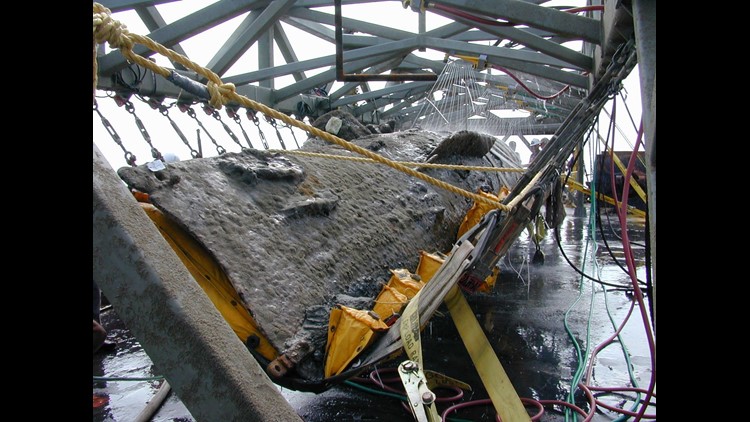NORTH CHARLESTON, South Carolina — More clues of the H.L. Hunley mystery are being revealed during conservation of the American Civil War submarine.
On Wednesday, researchers in a North Charleston, South Carolina, laboratory unveiled the crew compartment — which had been sealed by more than a century of ocean exposure and encrusted sediment.
“It’s that ‘wow’ moment when you step back and realize what you’re doing,” Johanna Rivera, one of the conservators, told CNN affiliate WCIV-TV in Charleston.
The Confederate Navy’s Hunley was the first submarine to sink a ship in battle, sending the USS Housatonic to the ocean floor in February 1864. Five members of the Union vessel died; 150 others were rescued. But the Hunley also went down, with all eight crew members perishing.
The conservation work, which started after the Hunley was raised in 2000, has finally exposed the sub’s entire crankshaft — used to propel the vessel by hand.
A tooth was found embedded in sediment on one of the crank handles. Officials said it wound up there “postmortem” after decomposition of one of the crew members.
Inside, they also found remnants of textiles and a thin metal wrap around the hand crank — showing how the crew operated the sub.
“When you’re turning an iron bar in front of you, or below you, you’re going to need something to keep your hands from chafing or rubbing them raw,” archaeologist Michael Scafuri told WCIV.
The new findings give insight into how the submarine was operated, but the biggest mystery is still unsolved — why did it sink after its successful, bold attack? An archaeological report issued earlier this year laid out six possible scenarios; a combination of factors may have doomed the innovative submarine.
One scenario holds that the Hunley was swamped by or struck by a Union vessel. Or that it plunged to the seafloor to avoid detection and never made it back up. A latch on the forward conning tower was found to be ajar.
The Hunley’s “torpedo” was attached to a spar. The crew embedded it in the Housatonic’s hull, and the charge was detonated. It’s possible the sub’s hull was breached by the explosion or the men were rendered unconscious at some point.
Nearly all of the human remains were found where the men were at their stations, rather than jammed together at an escape hatch. The remains were buried in 2004.
Work on the Hunley will continue for at least another five to seven years.
Conservators have concentrated on painstakingly removing the sediment — or concretion — that was firmly attached to the Hunley’s exterior and cramped interior.
After the process is finished, the submarine will be moved to a museum for display, though details have not been worked out.



